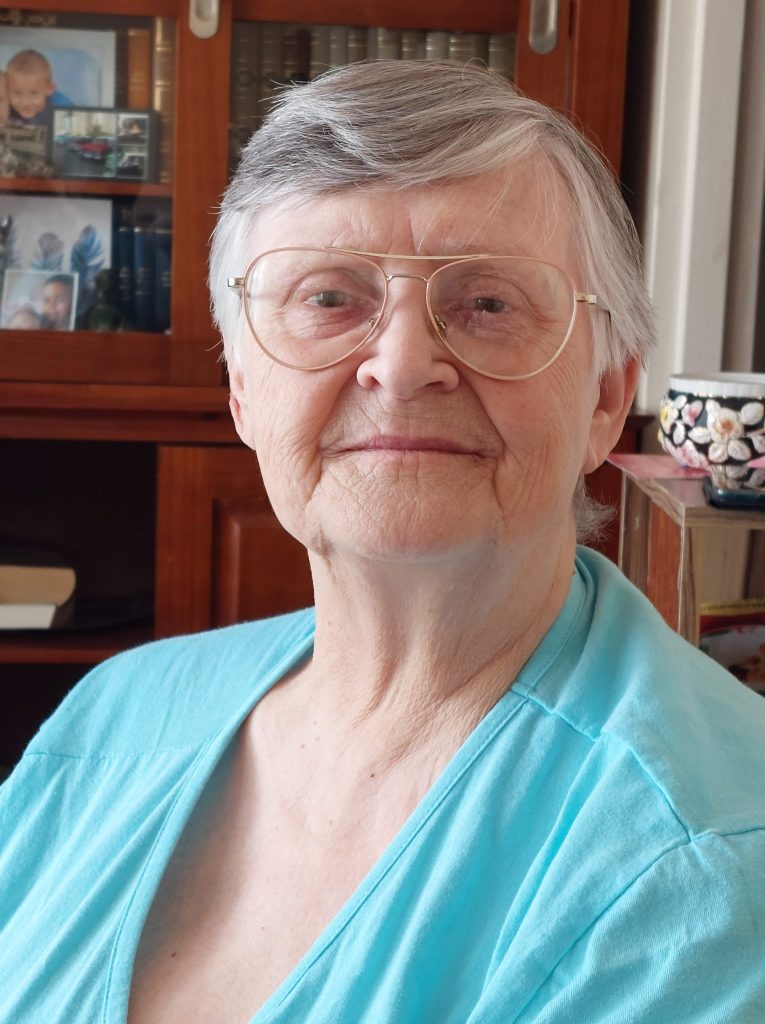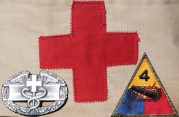For me, the best part of doing historical research is finding pieces of a story that immediately grabs your attention. A piece of a story that is not yet fully told, but that you just know that you have to tell it someday. These are the puzzles that are the most rewarding to complete.
I have been extremely lucky that my research has given me several of these almost forgotten stories. The first of these stories that I was able to piece together was identifying Paul Sand as the man who was liberated from Buchenwald.
Ever since I was honored to receive Captain Frederick B. Lea’s unpublished recollections of his WW2 service in the 46th Armored Medical Battalion back in 2013, there has been another story that I knew I had to find the missing pieces of. I am so glad that I am finally able to tell the story!
I would like to thank Joke Radius for all her help and efforts. Without her, this story would have remained un unfinished puzzle.
Let me start this story by sharing it as Captain Lea remembered it in 1997. In his unpublished recollections, he gave it the title:
“Christmas 1944 remembered”:
It was December 24, 1944 in Hachy, a small town on the border of France and Belgium, south of Bastogne.
While the US and German artillery carried on their noisy duel overhead and P-47’s flew cover for the tankers and the infantry of the Fourth Armored Division, a desperate battle raged under brutally cold winter conditions to open a corridor into the encircled city of Bastogne to relieve the 101st Airborne Division and bring supplies to the inhabitants.
The supporting Medical Company had set up a “clearing station” in the schoolhouse; life-saving operations were being performed in a surgical truck outside and their recovering patients were on litters in a classroom waiting evacuation. Casualties ran high.
Meanwhile, despite the clamor and disruption of war, civilian life went on as usual. Next door, the Mayor and his staff were preparing the Town Hall for the traditional Christmas Day party when every child would receive a toy and perhaps some candy.
In mid-afternoon, the first mail-truck in two weeks arrived with long anticipated presents from home along with the usual goodies: canned goods, packaged specialties, candy, cigarettes, and clothing. At someone’s suggestion that all but personal presents from family members be given to the townspeople, the 250 G.I.’s agreed. But this meant that the Mayor and his helpers worked most of the night arranging the bounty on tables for efficient and “fair” distribution on Christmas Day.
During the evening, a nurse-midwife came to announce the expected birth of a baby and request an American Godfather. Local custom required christening as soon as possible after birth. My driver, Sgt Lucien Pickard, who spoke French-Canadian style- was chosen. With a generous gift for his God-child contributed to by his army buddies, he went to the Catholic church at 6.a.m. for the christening of a baby girl, named Lucienne in his honor.
Following the service, the entire town filed into the Town Hall for their traditional Christmas party; but, this time there were presents not only for the children but presents from America for everyone in town. Freedom.
It was a Christmas never to be forgotten!
F.B.L.
November 1997
I just know that you have just experienced a little bit of my first reaction: “Who is this baby girl?”. I hope that you agree that this is just a remarkable Christmas story: the birth of a baby, so close to the front. The birth of a baby so close to the location where the casualties of war are treated. A story where human suffering and happiness intersect.
Let’s begin by looking at the pieces of the puzzle as we can find them in the recollections of Captain Lea.
53 years after the events of Christmas 1944, Captain Lea mistakenly places the events at Hachy, Belgium. From the original documents we know that Company C (C/46), Headquarters and Headquarters Company (HQ&HQ-Co) of the 46th Armored Medical Battalion (46thAMB) moved to Hachy on December 28th, 1944.
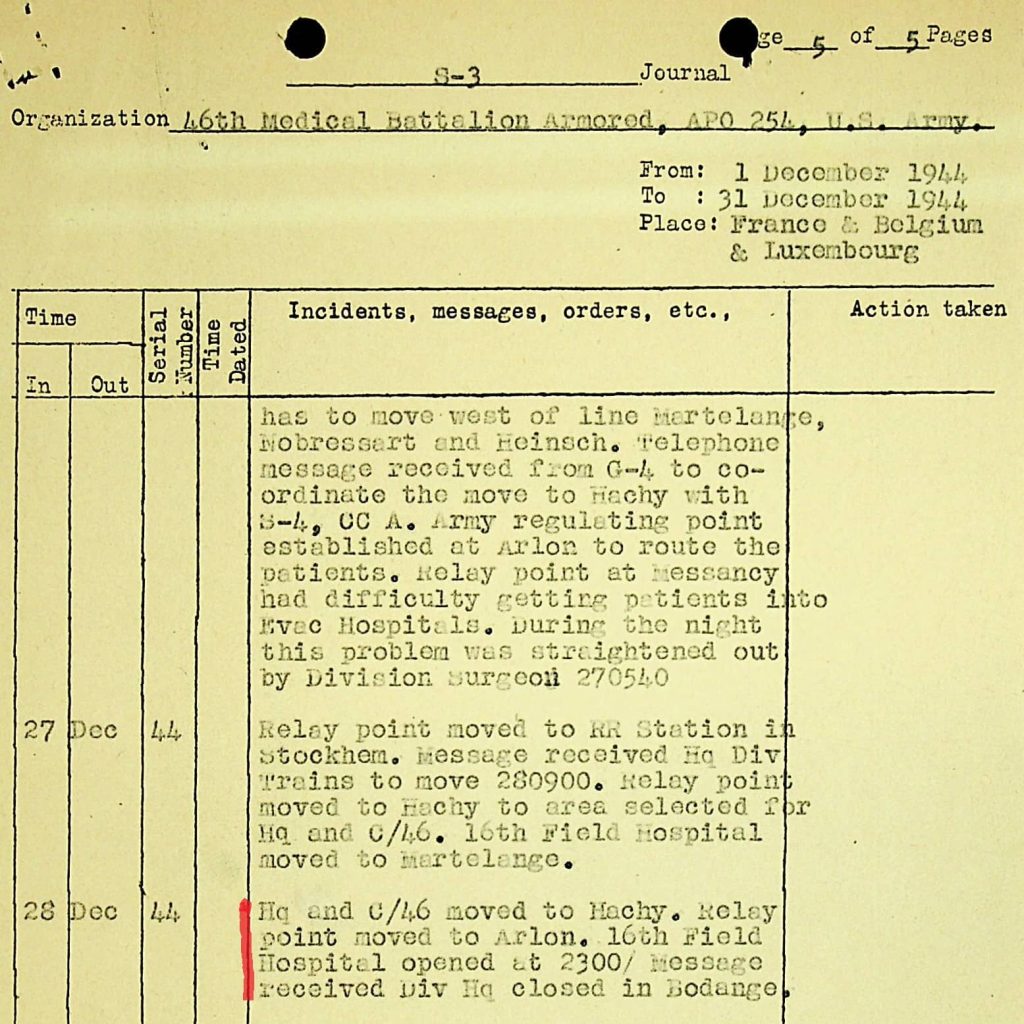
From the same documents we know that around Christmas 1944 HQ& HQ-Co were located in the village of Cutry, France. C/46 had set up its clearing station in the school building in Réhon-Heumont, France, a few miles of Cutry. Normally HQ/HQ-Co and the reserve medical company would set up in the same location, however it was found that there simply wasn’t enough space in Réhon-Heumont. This is why HQ/HQ-Co was relocated to Cutry.
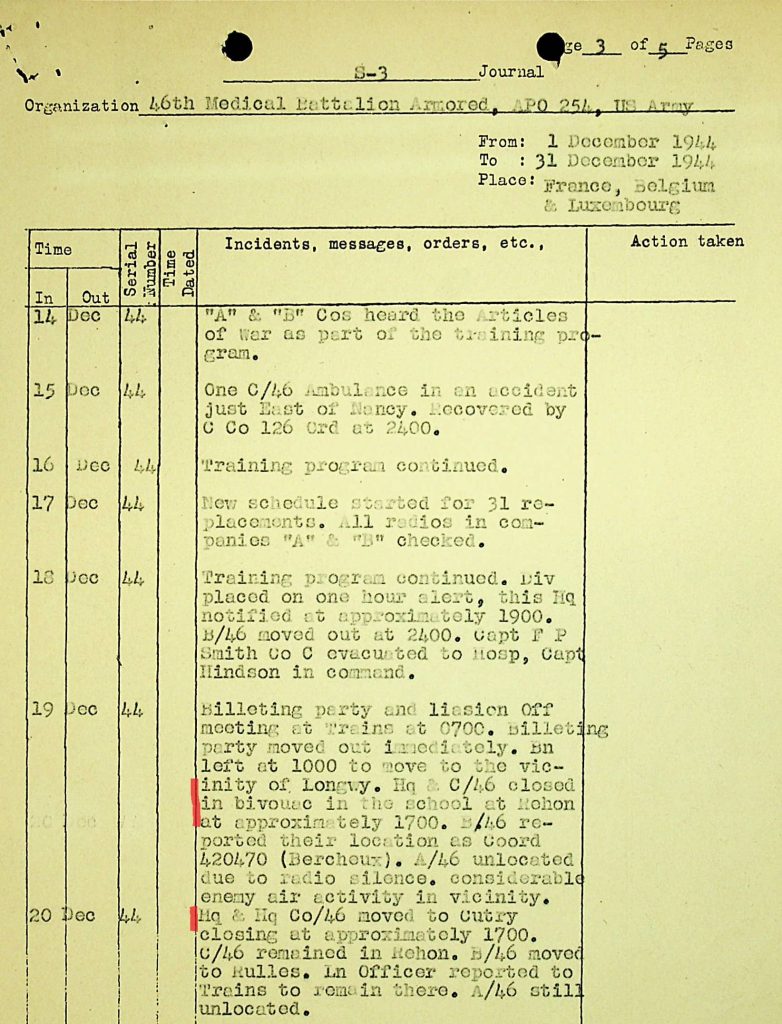

From the written recollections, it was not immediately clear to me whether the baby was born on December 24th or 25th. As Cutry was a small village this didn’t really matter in my search for her identity. I still had the most important piece of the puzzle. Captain Lea clearly describes that the baby was named after her American Godfather: Sgt. Lucien Picard. He was Captain Lea’s driver during the War. This photo shows the two of them together (Lea on the left, Pickard on the right). It was taken on, or about the 11th of April, 1945 in Buchenwald.

With the help of the current mayor of Cutry we were able to find the missing piece of the puzzle: the birth certificate.
This certificate shows us that on December 25th, 1944 at 02.00h a baby girl was born in Cutry named:
Léa Noëlle Lucienne Agostini.
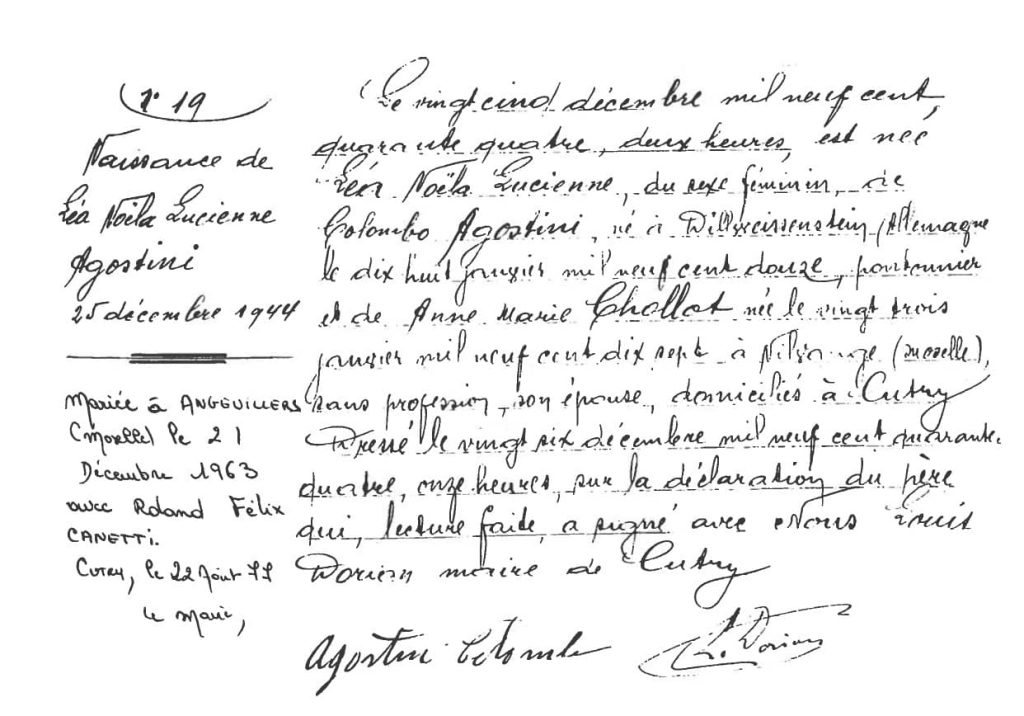
So, she was named after her Godfather: Lucienne, and given the name Noëlle, referring to her birthday on Christmas day (Noël in French). Of course, the first name intrigued me: was she also named after Captain Lea? It certainly seems so, even though Captain Lea did not mention this in his recollections. Was he then not informed of this or perhaps too modest to include it in his recollections?
It turns out that Léa’s first name had nothing to do with Captain Lea. She was named after a person that her father used to know.
Now that we knew her name, we were able to follow a small trail of documents that eventually led us to her. On the 6th of June of this year, 80 years after D-Day, my friend Joke found herself sitting across Léa Noëlle Lucienne. She was able to confirm the story but unfortunately could not provide us with more details.
After her birth in 1944, the War continued, the 46thAMB moved north to continue its care for the casualties of the 4thArmored Division. It seems that contact was lost between the family in Cutry and the men of the 46th AMB.
What remained was the memory of this special Christmas in 1944, a Christmas to be remembered. It remained so 53 years later, when Captain Lea wrote it down.
In the same collection of memories, he wrote:
“There’s more to life than winning, it’s the caring. There’s more to a story than the title. It’s the sharing.”
I am so glad that I can finally share this story with you today! 80 years after the events I would like to end by saying: Léa, thank you for your willingness to help us complete with the final piece of this puzzle.
Happy Birthday! And Merry Christmas!
